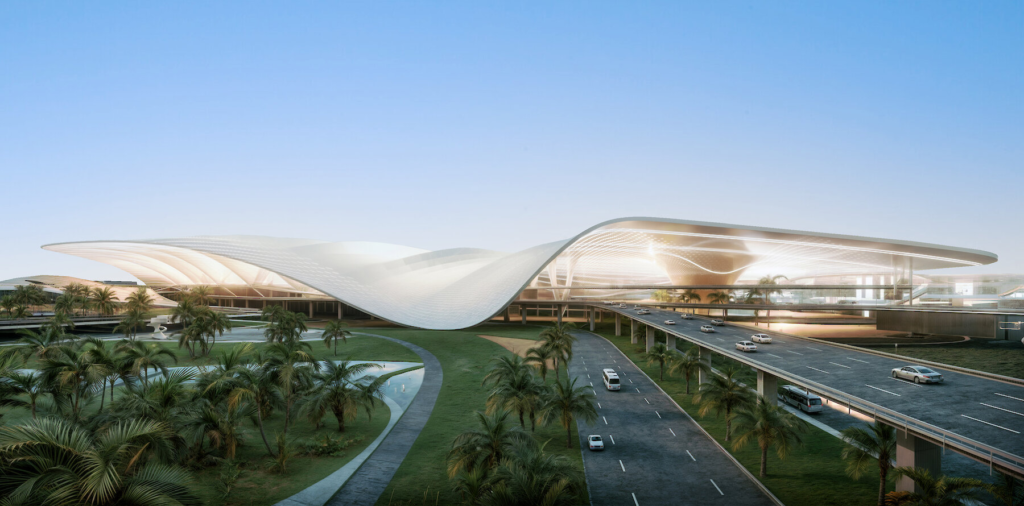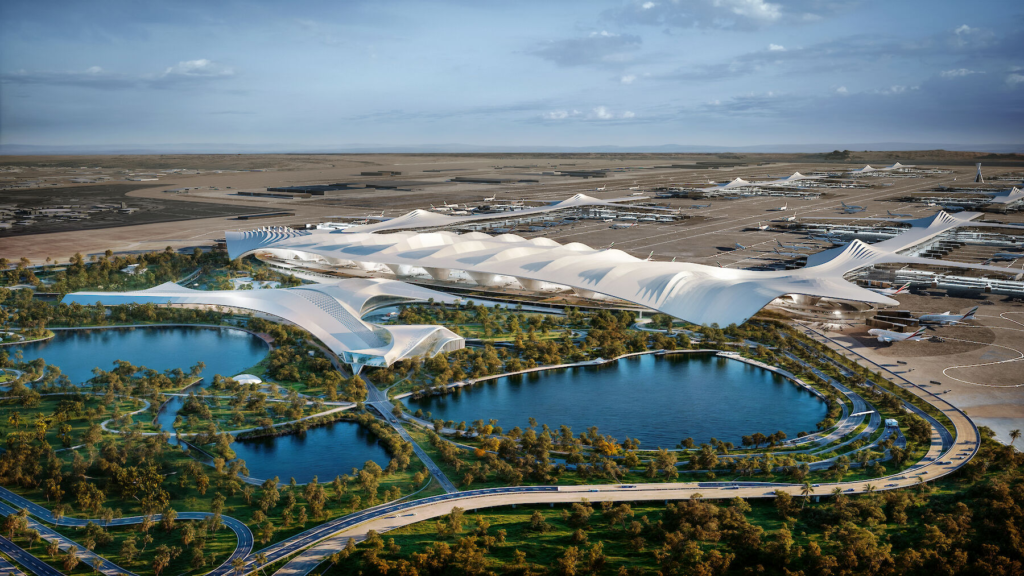Dubai’s Al Maktoum International Airport, the future home of the world’s largest airport capacity, is set to transform the way people travel. Plans are now underway to allow passengers to check in their luggage directly from Etihad Rail stations before even reaching the airport.
This new feature, revealed by Dubai Airports CEO Paul Griffiths, will redefine convenience for millions of passengers who will one day use this mega-hub in the south of Dubai. Once operational, travellers hopping aboard Etihad Rail will be able to drop off their bags at the station, sit back, and enjoy a stress-free ride straight to the terminal.

How it’s gonna change travellers’ lives
For anyone who’s rushed through check-in counters or dragged heavy luggage through airport halls, this news is a game-changer. The plan aims to streamline pre-flight formalities, saving precious time before boarding.
Griffiths explained that integrating Etihad Rail’s passenger service with airport operations will make the journey more seamless than ever. The idea is simple but powerful: let travellers hand over their bags at the train station, then arrive at the airport ready for security and boarding.
It’s a step forward that perfectly matches Dubai’s vision for smarter, connected mobility and positions Al Maktoum International Airport as a global benchmark for next-generation airport design.
Inside Dubai’s future mega-hub

Set to become the largest airport in the world, Al Maktoum International Airport, also known as Dubai World Central (DWC), will eventually handle up to 260 million passengers every year. The numbers are staggering: five parallel runways, 400 aircraft gates, and five terminal buildings spanning 70 square kilometres.
Phase one of the AED 128 billion project is expected to finish within the next decade, accommodating around 150 million passengers annually.
What’s unique about DWC’s design is that it’s being built to work hand-in-hand with technology. Artificial intelligence will play a big role in managing passenger flow, baggage handling, and even the underground rail network, which will help travellers move between terminals.
Griffiths described the underground train system as “comprehensive and fast,” designed to move passengers efficiently across the vast site. In his words, travelling from one end of the airport to another will feel like taking a quick ride across central London, a 15 to 20-minute journey, complete with comfortable seating.
From biometric check-ins to rail-linked travel
Dubai Airports has long been at the forefront of innovation, and Al Maktoum International will take that legacy further. Plans are being shaped around biometric-based systems to replace traditional check-ins altogether. Instead of queuing, passengers could glide through the airport using facial recognition and smart gates.
The luggage check-in at Etihad Rail stations fits into that same vision of frictionless travel. Once fully implemented, it means you could check in your bags at a train station in Abu Dhabi or Sharjah, board the rail line, and arrive at DWC ready to board your flight without handling your luggage again.
This concept isn’t new to Dubai; city check-in counters already exist in select locations, but the scale and integration with Etihad Rail make it an unprecedented move for the UAE’s aviation sector.
How will this change everyday travel in the UAE?
For residents and tourists alike, this shift is about more than convenience; it’s about reshaping the rhythm of travel in the region. With Etihad Rail connecting major emirates, from Abu Dhabi and Dubai to Ras Al Khaimah, the airport experience will begin long before travellers reach the terminal.
Imagine finishing a meeting in Abu Dhabi, hopping onto a train with your suitcase, and arriving at Al Maktoum International Airport with your check-in already complete. It’s efficient, sustainable, and undeniably very “Dubai.”
This integration is also expected to ease congestion on roads and at drop-off points, cutting back on the traffic flow that typically builds around busy airports. It’s a win for both passengers and the environment, supporting the UAE’s commitment to sustainability and smarter city mobility.
Dubai’s aviation future

While the check-in from rail stations is still in the planning phase, it reflects a wider ambition: to make Dubai the most passenger-friendly hub in the world. Sheikh Ahmed bin Saeed Al Maktoum, Chairman of Dubai Airports and CEO of Emirates Group, previously confirmed that the project’s first phase will be operational within ten years, setting new global standards in airport design and efficiency.
Once completed, DWC will not only handle record-breaking passenger volumes but also connect seamlessly to Dubai’s expanding urban and intercity transport networks. Combined with Etihad Rail, the metro system, and smart road infrastructure, it represents Dubai’s complete reimagining of how people move through the city and beyond.
The dream of arriving at an airport without queues, carrying nothing but your passport, might soon be a reality.
Dubai has always been a city that dares to think big, and with Al Maktoum International Airport’s future check-in system linked to Etihad Rail, it’s rewriting the rules of global travel once again.
The journey to the airport will soon be as effortless as the flight itself, turning travel into a seamless, connected experience that begins on the tracks.
Read More:
- Abu Dhabi Mobility Announces Temporary Road Closures in Al Dhafra Region – Social Kandura
- UAE Executes First Government Transaction Using the Digital Dirham – Social Kandura
Follow Social Kandura for more updates on local news and things to do in Dubai and across the UAE.











